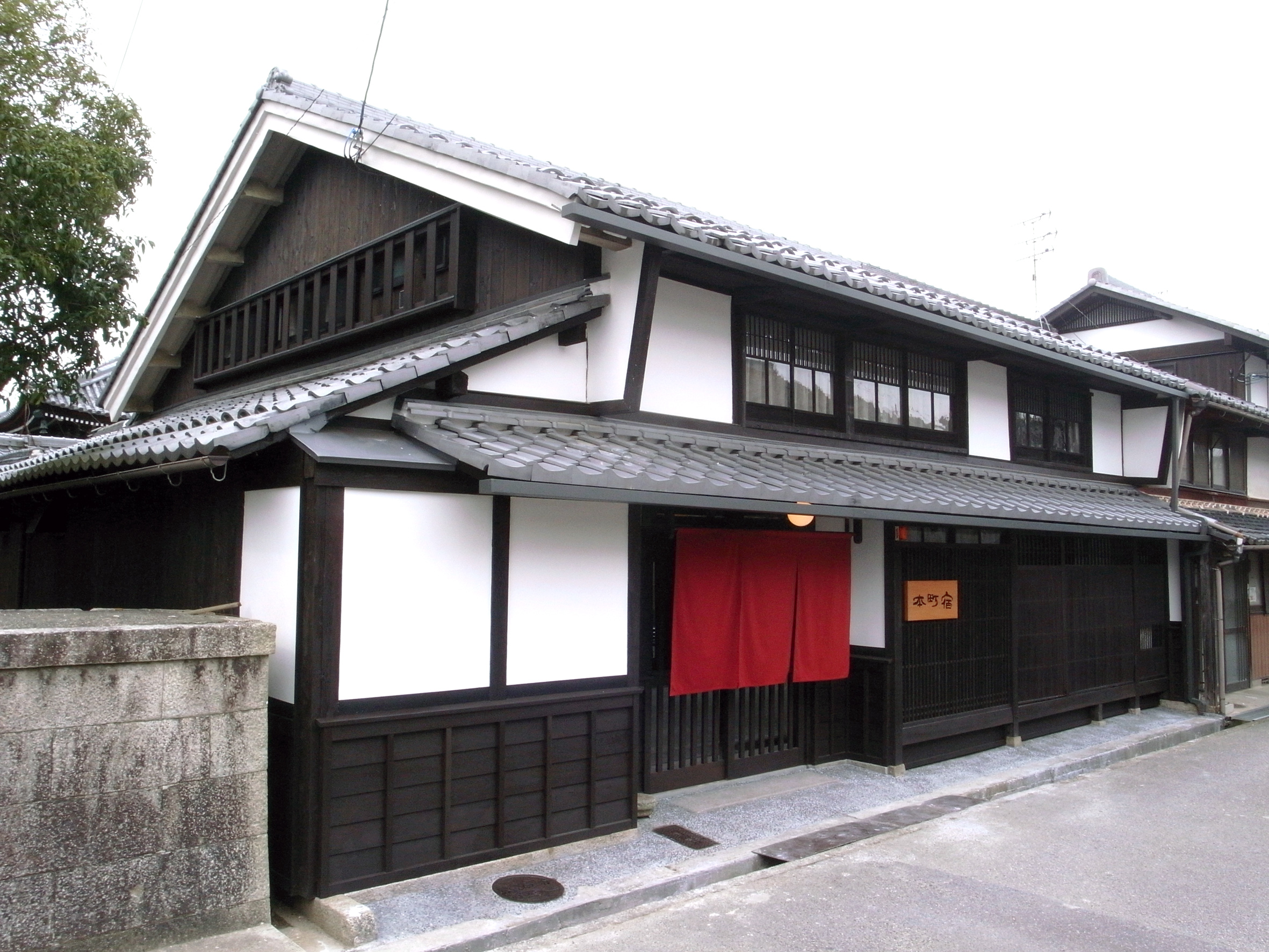Honmachi Juku
Honmachi Juku
A culturally enriching and entertaining stay in a traditional home in Hikone
place Area:
access_time Published: 2020.12.28
Name in Japanese: 本町宿
Pronunciation: honmachi juku
Honmachi Juku is an accommodation and event facility in the historic backstreets of Hikone. It’s a restored traditional building next to a large and imposing Buddhist temple, Myōshō-ji. I visited Honmachi Juku to talk to Todokoro Iwao, architect and director of the Hikone Culture Design Forum NPO.
First, Todokoro-san showed me around the house. The original ‘doma’, the earth-floored entrance hall, has been converted into a kitchen-counter area, and a new, more accessible staircase has replaced the steep original. Otherwise, the changes have been slight, such as adding discreet shelving. Upstairs there are four rooms, one of which has two western beds, the other rooms being for futons. The smallest room has a low ceiling featuring a thick wooden roof beam.
“When you sit up in bed, you can hit your head and experience enlightenment”, jokes Todokoro-san. “Foreign visitors particularly like this room.”
The room facing the street has a narrow window.
“It was designed like this because it was considered improper for commoners to look down on the Lord when he passed by. Or so it’s said, anyway.”
There’s a western toilet upstairs for convenience.
Downstairs, there are two more tatami rooms that can be used for sleeping. On the ground floor are a bathroom, a shower room, two toilets, and a tatami-mat common room. It looks out onto a well-tended garden. The common room is provided with books, Japanese musical instruments (which surprisingly many foreign visitors are able to play), and a carom board.
Todokoro-san completed the renovations three and a half years ago. His aim was to make the place liveable while maintaining its cultural integrity.
“What sort of building was it originally?”
“Originally it stood in the middle ring of the castle moat system. On the outer ring were the homes of ‘ashigaru’ infantry, on the inner ring were the houses of higher-ranking samurai, and in the middle were the homes of craftsmen and shopkeepers. We don’t know exactly who owned it or what it was used for. The materials used for the house weren’t of a particularly expensive type.”
“The name of this place includes the word ‘juku’. Was this area ever actually a post station?”
“Well, we took a liberty with history there. It never was a post station like Takamiya Juku or Torimoto Juku which were typically located outside of castle towns. But we wanted to make this old townhouse in Hikone into a waystation that people from various places stay at for a while and interact with locals – a place to exchange information and to enjoy entertainments.”
“Do many foreigners stay here?”
“Before corona, about thirty percent of our guests were from overseas. About half of them were from Asia, and the other half from the West. Young foreigners tend to stay for about a week and use it as a base for day trips to Kanazawa, Kyōto and other regional cities.”
As a specific way to encourage exchanges, Honmachi Juku offers plans that include beginner’s lessons in Japanese culture like playing the koto, and the tea ceremony, which appeal to overseas visitors who want to experience Japan more deeply.
Another attraction is the counter area, where Todokoro-san holds what he calls ‘salons’. This involves him cooking and serving sake to guests. When he learns that I enjoy a bit of sake, he immediately goes into salon mode. In a flash, I’m seated at the counter, and he’s pouring me a large serving of excellent local sake, attired suitably in a Japanese jacket.
Todokoro-san explains about the Hikone Culture Design Forum NPO.
“The name ‘Culture Design’ is a huge bit of pretension, but what we want to emphasize is that we’re not just concerned with economic performance. Although that’s important, we also want to preserve the customs, history, and way of life that have been passed down in this locality. So we’re trying to design a local economy based around the culture that has existed here.”
When you go out into the garden of Honmachi Juku, the massive gate of the temple next door looms above you. It’s an amazing and unusual sight. If Todokoro-san is available, he’ll take you up to the balcony of the temple gate from where you can look down onto the old merchant’s home where you’re staying. From this high platform, you can see Hikone Castle and over the houses of Hikone towards Lake Biwa. This is an opportunity absolutely not to be missed!
Location
place 3-3-55 Honmachi Hikone, Shiga Prefecture, Shiga prefecture

